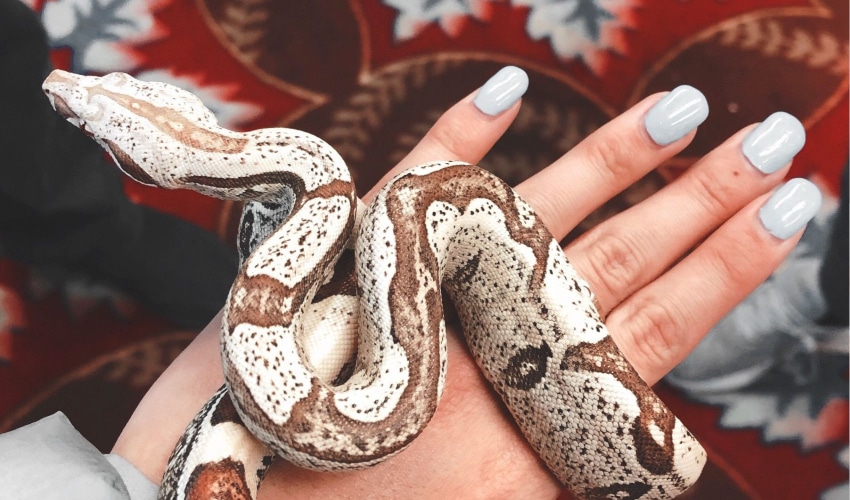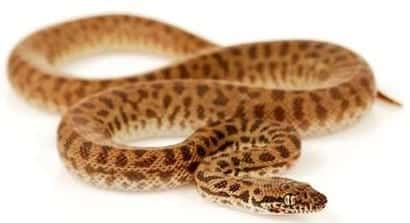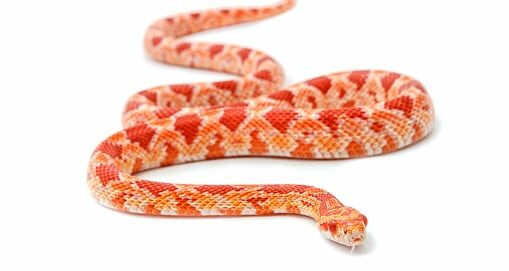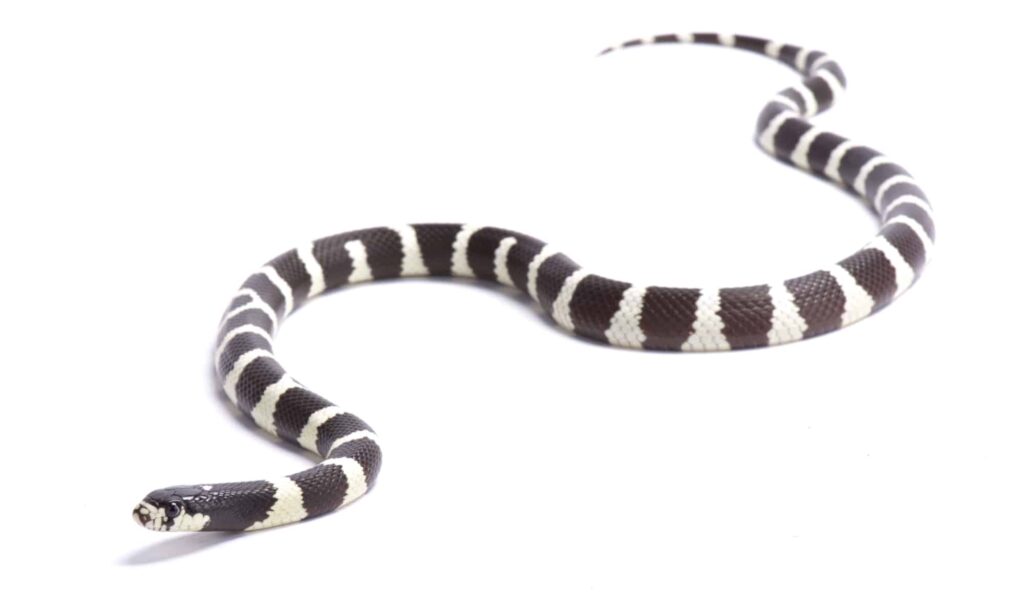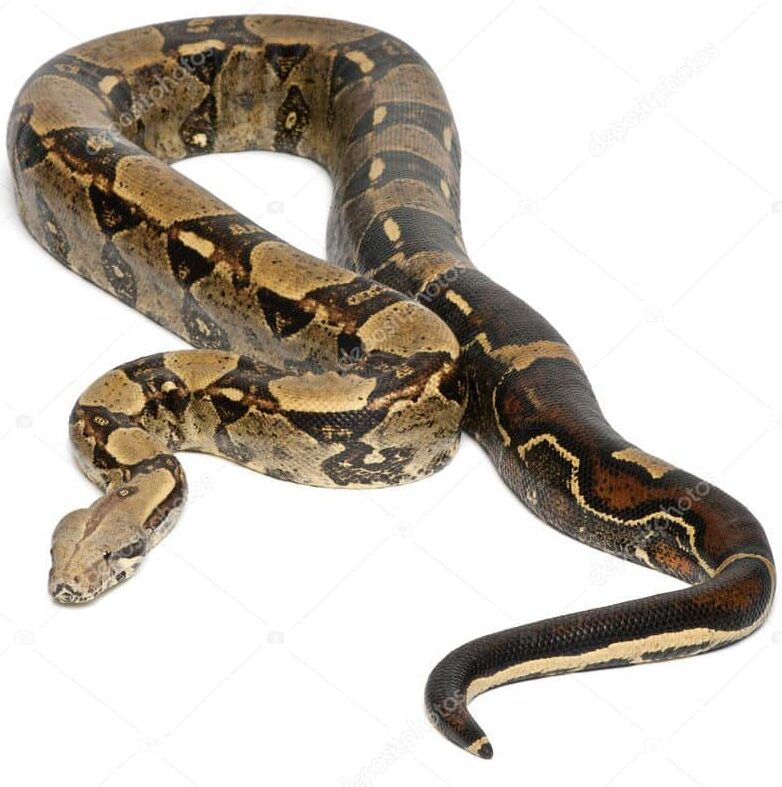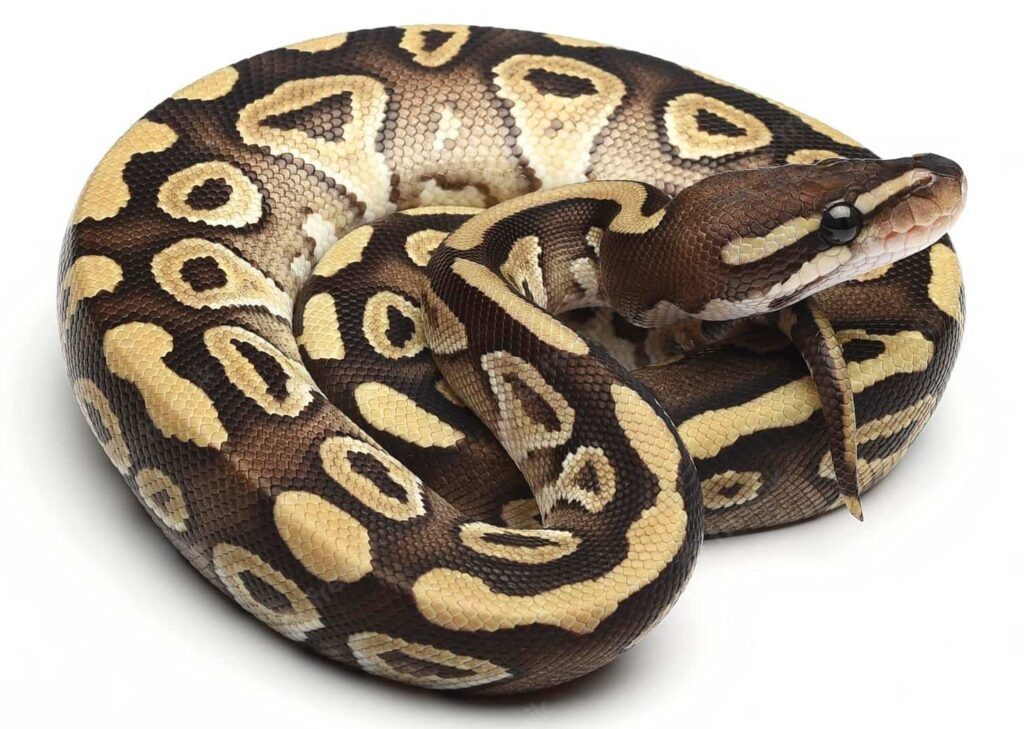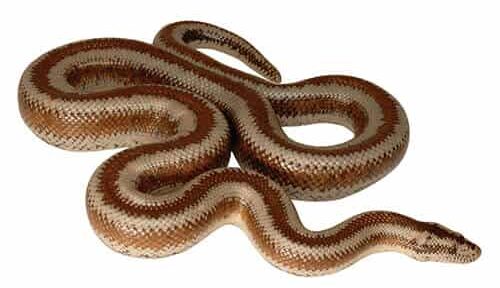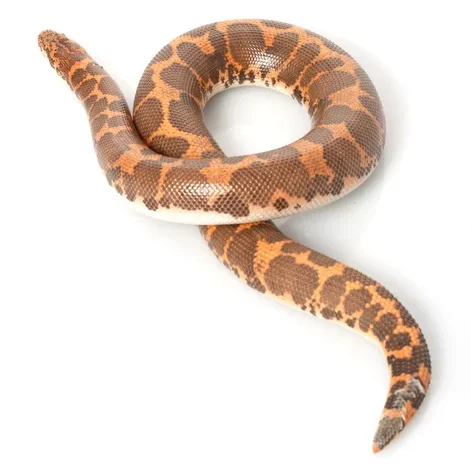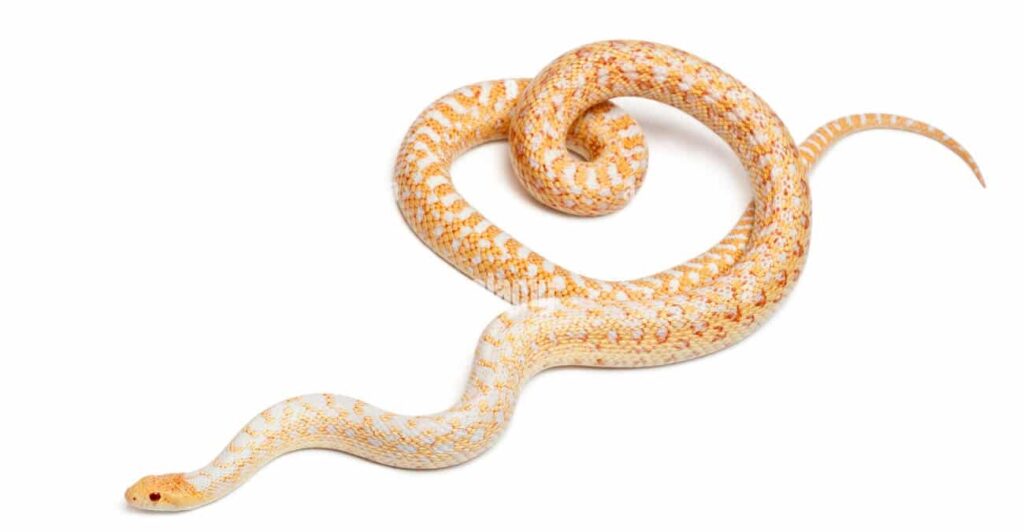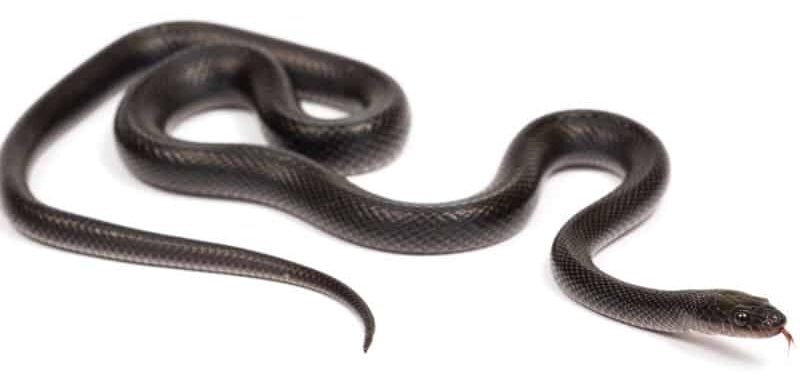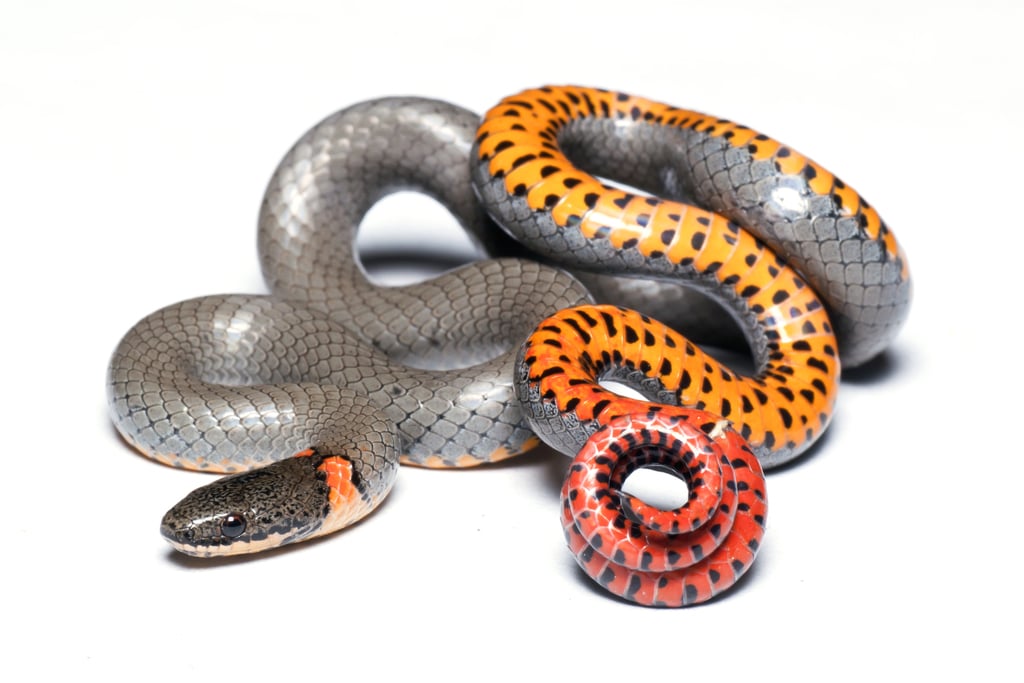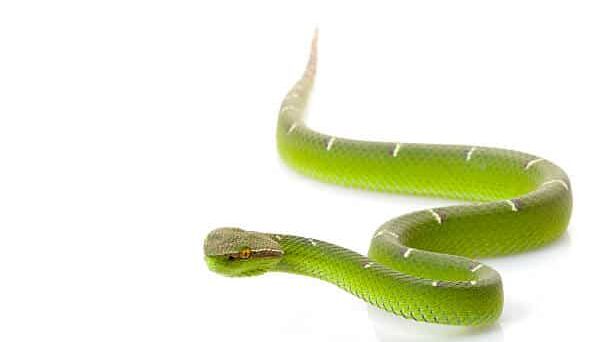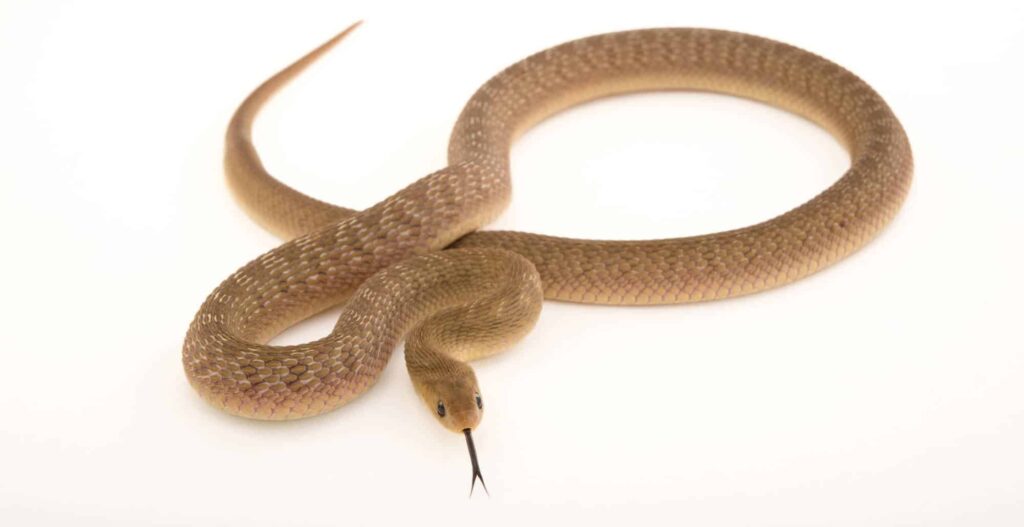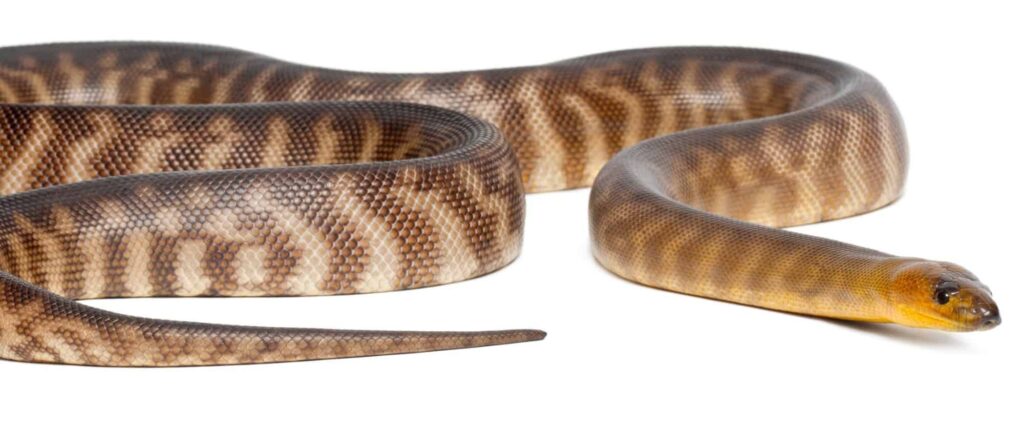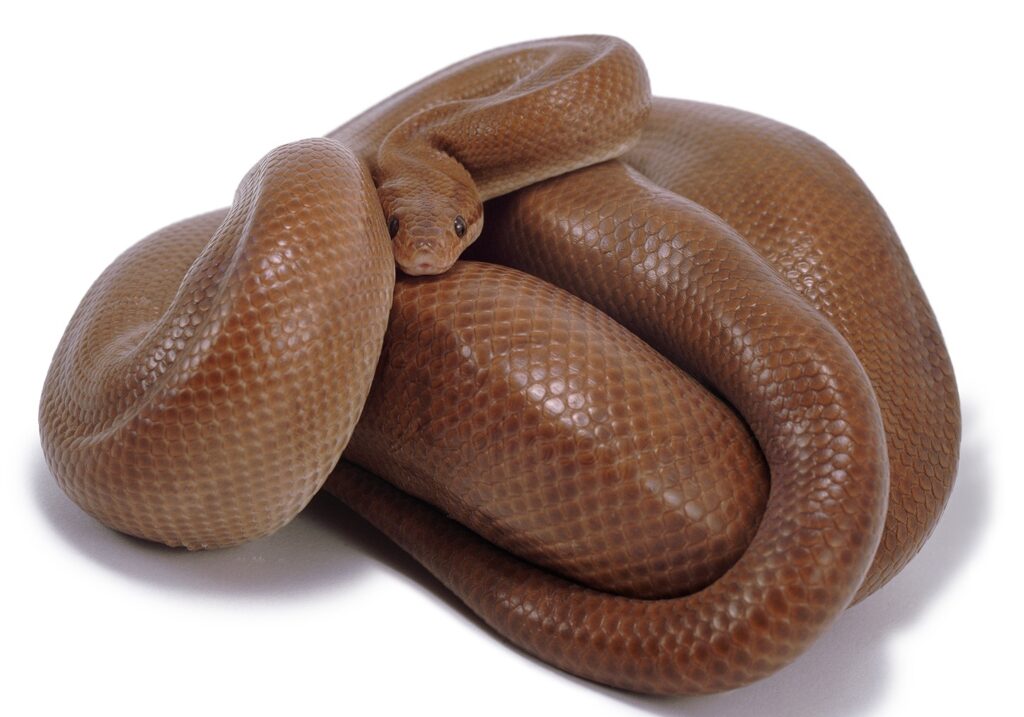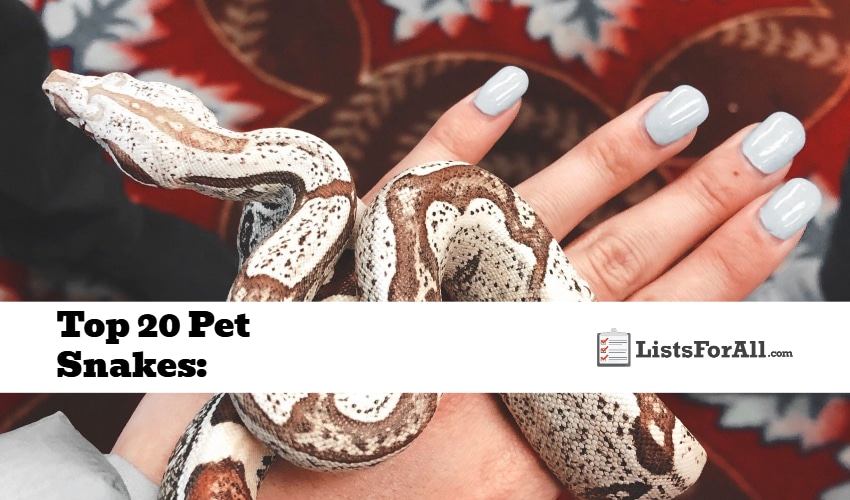
Best Pet Snakes: Finding the Perfect Pet Snake for You
Do you want a pet that is low-maintenance, doesn’t require a lot of space, and is interesting to watch? If so, a snake may be the perfect pet for you, and this list of the best pet snakes will help you find the right breed for you.
This list of the best pet snakes will highlight the top options and help you find the perfect new pet for your household. Whether you want a large snake like a boa or something smaller like a corn snake, this list of the best pet snakes will provide all the top choices.
Looking for more pet-related lists? If so, visit our lists of the best house pets and best dog breeds. Both of these lists will provide even more great creatures to love.
Top 20 Pet Snakes:
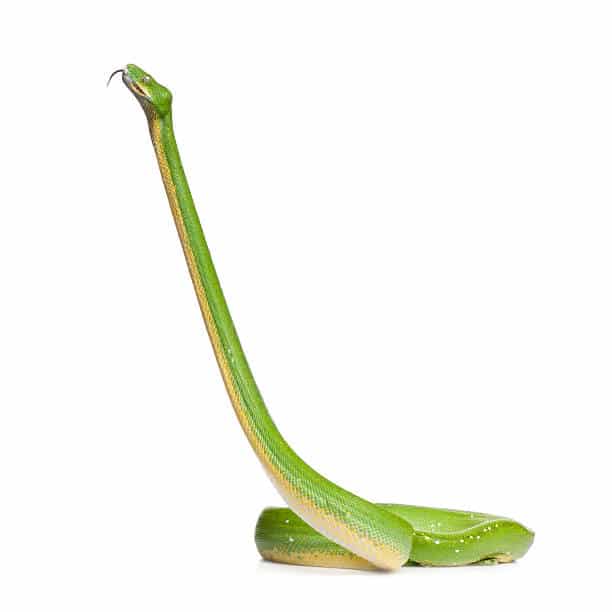
1. Smooth Green Snake
Highlights: Rare, ideal for experienced reptile keepers, and closely related to rough green snakes.
About Pet Snake: Smooth green snakes are best suited to experienced reptile keepers, as they can be a bit nippy and are best left to their own devices in a small enclosure. But if you’re up for the challenge, these pet snakes can make for an impressive addition to your home.
Smooth greens are closely related to rough green snakes and share many of the same care requirements. What sets them apart is their rarity – they’re not as commonly bred in captivity, which makes them a bit more of a challenge to find. A smooth green snake makes a stunning and unusual pet.
2. Children’s Python
Highlights: Docile, low maintenance, and tops out at around four feet.
About Pet Snake: Assuming you’re interested in the Children’s Python snake as a pet, let us tell you a little more about this incredible reptile. First off, they are relatively small for a python, topping out at around four feet. This makes them the ideal size for beginner snake owners.
They are also very docile and can even be around supervised kids without any problems. As far as care and diet go, they are very low maintenance. All they require is a diet of rodents, and they can live up to 30 years with proper care.
3. Corn Snake
Highlights: Easy to handle, 2-6 feet long, and can live for over 20 years.
About Pet Snake: When it comes to pet snakes, the Corn Snake is definitely one of the best options out there. These creatures are relatively docile and easy to handle, making them ideal for first-time snake owners.
Additionally, they don’t get too big, usually only reaching 2-6 feet in length. With proper care, Corn Snakes can live for over 20 years – so if you’re looking for a long-term pet, this snake is a great choice. Overall, the Corn Snake makes an excellent pet snake and is sure to provide hours of enjoyment.
4. California King Snake
Highlights: Shy by nature, active during the day, and native to the United States.
About Pet Snake: Native to the United States, these beautiful snakes typically grow to 2.5-5 feet long and are active during the day. They’re easy to care for, too – just provide them with a 20-gallon tank and regular hours of daylight and darkness.
California King Snakes make great pets for people of all ages. They’re shy by nature but will become used to handling with frequent contact. And if you’re ever worried about being bitten, don’t be – instead of striking in anger, these snakes will coil up in defense. With proper care, your California King Snake can live up to 20 years.
5. Common Boa Constrictor
Highlights: Found in South and Central America, grows up to 13 to 16 feet in length, and is ideal for experienced handlers.
About Pet Snake: The common boa constrictor is one of the best pet snakes due to their large size. They can grow up to 13 to 16 feet in length, making them an impressive sight. Boas are found in South and Central America, and their diet consists of deer, lizards, fish, and other creatures.
As a pet, you can feed them rabbits, rats, and chickens. They make great companions for experienced handlers, but children should be kept away from them as they are strong and may wrap tight if stressed or threatened.
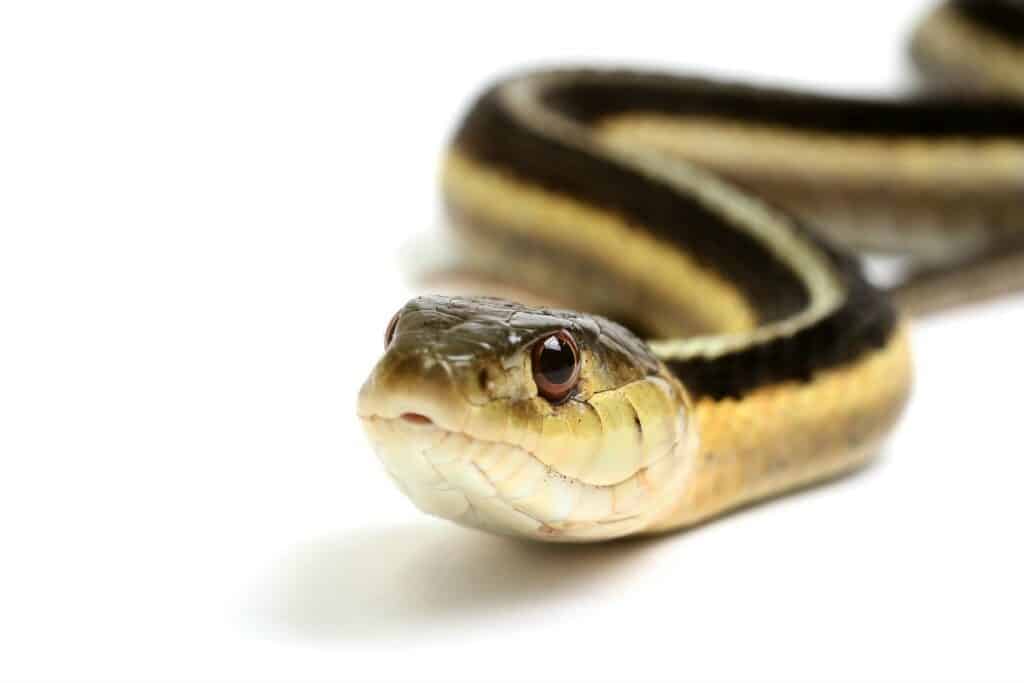
6. Garter Snake
Highlights: Found in gardens, best for experienced snake handlers, and typically eats earthworms or fish.
About Pet Snake: Looking for an interesting and unique pet snake? Look no further than the garter snake. These snakes are found in gardens and other open spaces and make great pets for experienced snake owners. They typically eat earthworms or fish, although some may have different diets. With proper care, they can make wonderful pets.
7. Ball Python
Highlights: Native to Africa, nocturnal, and can live for 20-30 years.
About Pet Snake: Native to Africa, ball pythons are nocturnal creatures that like to curl up in a “ball” when they feel threatened. They typically grow 3.5-5 feet long and can live 20-30 years, making them great long-term pets.
Although they generally prefer to eat mice, ball pythons can be picky eaters, so it’s important to do your research before getting one. With proper care, ball pythons make great pets for beginner herpetologists and snake lovers alike.
8. Rosy Boa
Highlights: Has a demure temperament, can live up to 25+ years, and is a skilled escape artist.
About Pet Snake: These creatures are docile by nature and can live up to an impressive +25 years in captivity with the right care. While not as popular as some other snakes, their demure temperament and lengthy lifespan make them well-respected among collectors.
Take note that Rosy Boas tend to be skilled escape artists, so it’s important to construct a sturdy enclosure that will keep them safely contained. Additionally, these snakes primarily subsist on a diet of rodents – though they prefer thawed frozen mice to live ones.
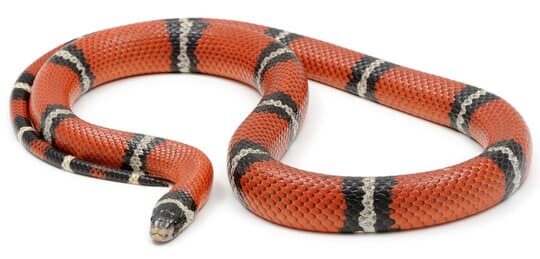
9. Milk Snake
Highlights: Can grow up to 2 feet in length, is black, white, and red in color, and does not need a lot of sun exposure.
About Pet Snake: Native to the United States and Mexico, Milk Snakes are small to medium-sized snakes that can grow up to 2 feet in length. They are black, white, and red in color and make great pets for both beginners and experienced snake owners.
Milk Snakes are docile creatures that rarely bite and can live up to 20 years with proper care. They prefer to dwell in woods or rocky areas and do not need a lot of sun exposure. An under-tank heater is recommended for this reptile.
10. Western Hognose Snake
Highlights: Native to the US, Canada, and Mexico, known for its upturned pug-ish nose, and is an expert digger.
About Pet Snake: Native to the US, Canada, and Mexico, these snakes are known for their upturned pug-ish nose. Active in the mornings and evenings, they enjoy snacking on toads and small lizards, as well as mice (when toads and lizards aren’t available).
Hognose snakes are also expert diggers, often using their skills to find toads hiding in the sand. They can make great pets for those who enjoy handling snakes, and their hissing is not aggressive behavior.
11. Kenyan Sand Boas
Highlights: Popular, relatively tame, and less active than some other snakes.
About Pet Snake: Kenyan sand boas are the ideal beginner snakes for first-time snake owners. They are small, docile, and relatively tame, making them a great choice for those looking for a pet snake. Kenyan sand boas are also very popular, so you can be sure to find one that fits your personality and preferences.
However, don’t expect them to be super active – they prefer to spend most of their time chilling underneath a nice level of substrate in their enclosures.
12. Gopher Snake
Highlights: Non-venomous, can be either nocturnal or diurnal, and typically grows to be 4.5 feet long.
About Pet Snake: These reptiles are commonly mistaken for rattlesnakes but can easily be distinguished by their rounded nose and pupil. They are also non-venomous, making them safe to handle for people of all ages. Gopher Snakes are active snakes and can be either nocturnal or diurnal.
13. African House Snake
Highlights: Native to sub-Saharan Africa, can adapt to many different ecosystems, and are comfortable around human dwellings.
About Pet Snake: These snakes are native to sub-Saharan Africa but can adapt to many different ecosystems. They’re known for being comfortable around human dwellings, making them a great choice if you’re looking for a snake that won’t be too stressed in a home environment.
African House Snakes are also harmless, although they may try to run away if they get scared. You can tell them apart from other snakes by their brown color and a thin stripe of white or tan running across the top of their body.
14. Ringneck Snake
Highlights: Has an earthworm-based diet, a ring-like marking near the base of its head, and is venomous.
About Pet Snake: As its name suggests, this snake has a ring-like marking near the base of its head, which makes it instantly recognizable. And although it is venomous, the venom is extremely mild, and only the largest of the species can effectively bite humans. So there’s no need to worry about handling your new pet.
The ringneck snake is also a great choice for first-time snake owners as it is relatively small in size. Plus, it is easy to care for as it thrives on an earthworm-based diet.
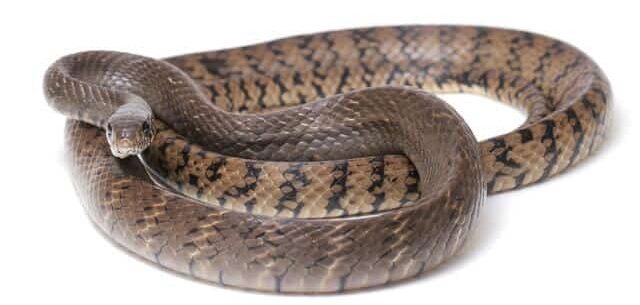
15. Rat Snake
Highlights: Averages 3-5 feet in length, prefers to live in wooded areas or barns, and will “play dead” when threatened.
About Pet Snake: Related to the Corn Snake, the Rat Snakes average 3-5 feet in length and can be found throughout the United States. These snakes typically eat rodents and prefer to live in wooded areas or barns.
If they feel threatened, Rat Snakes will “play dead” instead of striking. Docile by nature, these snakes are easy to care for and make great beginner snakes for people of all ages. With a lifespan of up to 30 years, Rat Snakes are excellent long-term pets.
16. Rough Green Snake
Highlights: Need vegetation and hiding places, not aggressive, and does not enjoy being handled.
About Pet Snake: If you’re looking for a pet snake that’s easy to care for, the rough green snake is a great option. Rough green snakes originate from wetlands and forests, so their enclosure should have plenty of vegetation and hiding places.
These snakes are not aggressive and rarely bite, but they don’t enjoy being handled too much. With proper care, your rough green snake will thrive in captivity and provide you with years of enjoyment.
17. Egg-eating Snake
Highlights: Egg-only diet, gentle, and interesting.
About Pet Snake: Egg-eating snakes are a unique type of pet snake that are known for their interesting egg-only diet. If you’re looking for a slightly different experience when it comes to snake ownership, then an egg-eating snake may be a great reptile for you. African egg-eating snakes are gentle creatures that make great pets.
18. Woma Python
Highlights: Desert-dwelling, boasts a natural coloration, and is quite active.
About Pet Snake: These desert-dwelling snakes are native to North and Central Australia and boast a natural coloration that helps them blend in with their wild habitat. Expect to see thick bands of light or dark brown against a base color of silver or creamy beige – the only part of the snake that isn’t covered in this pattern is the head, which takes on a yellow hue.
Unlike many other species of python, woma pythons are quite active, making them interesting and enjoyable pets to watch. Since they’re nocturnal, you’ll likely see most of their activity at night. But even during the day, these snakes are known to move around their enclosure and sometimes even bury themselves in the substrate.
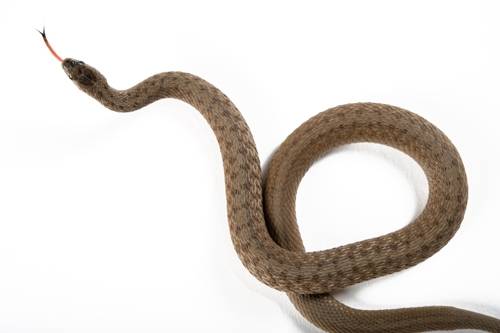
19. Dekay’s Brown Snake
Highlights: Can be found in a variety of habitats, is not easily stressed by handling, and does not require a large food source.
About Pet Snake: Dekay’s Brown Snakes are the ideal pet snake for anyone looking for a small, low-maintenance reptile. These snakes are native to North America and can be found in a variety of habitats, from wooded areas to fields and meadows.
They are small in size, only reaching a foot in length, which makes them easy to care for. Dekay’s Brown Snakes are also naturally curious and not easily stressed by handling, making them ideal pets for both kids and adults. Because they eat mostly insects and earthworms, they don’t require a large food source, making them relatively easy to care for.
20. Colombian Rainbow Boa
Highlights: Native to Colombia, stunning iridescent scales, and likes to climb.
About Pet Snake: These snakes are native to Colombia and get their name from their stunning iridescent scales. In the right light, you’ll see the entire spectrum of colors reflected in their skin. Colombian rainbow boas are semi-arboreal, meaning they like to climb.
They’ll need a habitat with plenty of branches and hiding spots. When they’re not climbing, they like to curl up in snug hiding places. One of the best things about Colombian rainbow boas is that they’re generally peaceable snakes. With proper handling and socialization, though, they make excellent pets.
Editor’s Pick: Best Snake for Beginners
Corn Snake – Best Overall Pet Snake for First-Time Owners
The Corn Snake tops our list as the best beginner-friendly snake due to its docile temperament, easy care routine, and manageable size. These snakes are typically calm, rarely bite, and are comfortable being handled, making them a great introduction to snake ownership. Corn Snakes also come in a variety of beautiful color morphs and patterns, adding visual appeal to their already impressive resume. With proper care, they can live over 20 years, offering a long-term companion for reptile lovers of all ages.
Frequently Asked Questions About the Best Pet Snakes
What is the best snake for a beginner pet owner?
The Corn Snake, Ball Python, and Kenyan Sand Boa are widely regarded as the best snakes for beginners. They are easy to care for, tolerant of handling, and have simple dietary needs. These snakes are also more forgiving when it comes to habitat fluctuations, which is ideal for new reptile owners still learning the ropes.
How much space does a pet snake need?
Snake habitat needs depend on the species and their adult size. Most small-to-medium snakes like the Children’s Python or Rosy Boa can thrive in a 20–40-gallon tank. Larger snakes like Boas or Colombian Rainbow Boas will require significantly larger enclosures—sometimes 6 feet or longer—with vertical climbing space and secure lids.
Are pet snakes dangerous?
Most commonly kept pet snakes are non-venomous and safe for responsible owners. While some may bite if threatened, breeds like the Ball Python or Milk Snake are known for their gentle behavior. It’s important to always research the temperament and handling requirements of any snake you’re considering.
What do pet snakes eat?
Most pet snakes eat rodents, such as mice or rats, which are often provided frozen and thawed. Some species, like the Garter Snake or Ringneck Snake, prefer worms or fish, and Egg-eating Snakes feed exclusively on bird eggs. Be sure to research the specific dietary needs of your chosen snake species.
Tips for Choosing and Caring for the Best Pet Snakes
1. Match the Snake’s Size to Your Space
Larger snakes like Boa Constrictors or Woma Pythons need much more room and stronger enclosures than smaller species like Dekay’s Brown Snake or Kenyan Sand Boa. Choose a snake whose adult size fits comfortably in your available living space.
2. Consider Handling Frequency
If you want a snake you can handle often, go for breeds like the Ball Python, Rosy Boa, or California King Snake, which tolerate frequent interaction. Avoid species like Rough Green Snakes that stress easily with too much handling.
3. Research Temperament
Each species has a different temperament. Snakes like the Corn Snake and Milk Snake are friendly and easygoing, while others like the Smooth Green Snake are more sensitive and suited to experienced owners.
4. Understand Heating and Humidity Needs
Proper heating and humidity are vital. Tropical snakes like the Colombian Rainbow Boa need higher humidity levels, while desert species like the Kenyan Sand Boa require drier, warmer environments. Invest in a good thermostat and hygrometer for accurate enclosure control.
5. Plan for Long-Term Care
Many snakes live 15 to 30 years, so be prepared for a long-term commitment. Choose a snake species that matches your lifestyle and budget for food, vet care, and habitat supplies.
Best Pet Snakes Conclusion
Overall, there are many great reasons to consider getting a snake as a pet. They are low-maintenance and easy to care for, they do not require much space, and they are interesting and fun to watch.
Whether you’re looking for an unconventional pet or you live in an area where traditional pets may not be allowed, snakes make excellent companions for animal lovers of all kinds , and this list of the best pet snakes will help you find the right option for you.
Is there a pet snake that you think should be on this list but isn’t? Please feel free to share it below if so.

